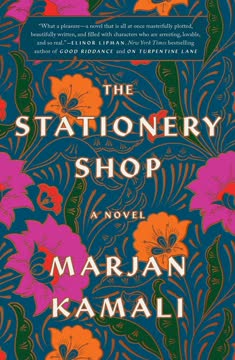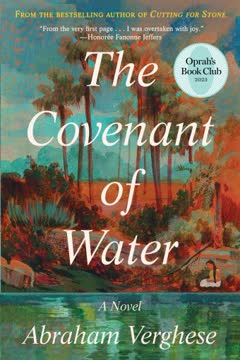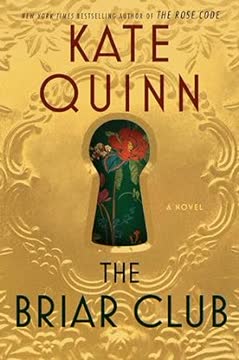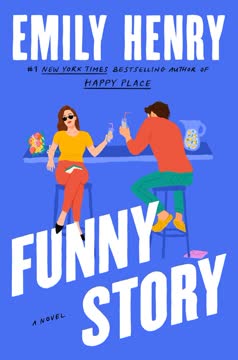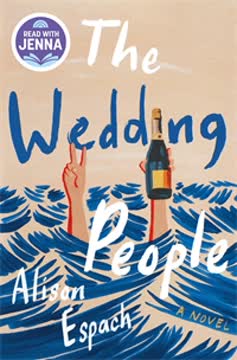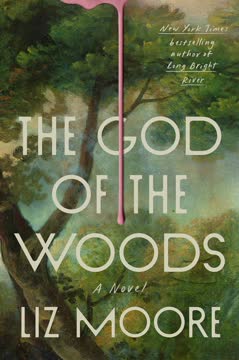Plot Summary
Stationery Shop Encounters
In 1953 Tehran, Roya, a dreamy, book-loving teenager, finds solace in a small stationery shop run by the gentle Mr. Fakhri. Amidst the political fervor of the city, she meets Bahman, an idealistic and passionate young man determined to change the world. Their connection is immediate, forged over poetry, books, and the quiet sanctuary of the shop. As their friendship deepens, the shop becomes their haven—a place where love and hope can bloom, even as the world outside grows more uncertain.
Tehran's Blossoming Romance
Roya and Bahman's relationship quickly transforms from friendship to a deep, consuming love. They share secret meetings, exchange poetry, and dream of a future together. Their families, though progressive in some ways, are shaped by tradition and expectation. Bahman's mother, Badri, is emotionally volatile and disapproves of Roya, preferring the wealthy and well-connected Shahla for her son. Despite these obstacles, Roya and Bahman become engaged, believing their love can overcome any barrier.
Letters Hidden in Books
As political tensions escalate, Bahman is forced into hiding, and the couple's only means of communication is through letters smuggled in books at the Stationery Shop. Mr. Fakhri, the shopkeeper, becomes their trusted intermediary, placing their notes between the pages of poetry. The letters are filled with longing, devotion, and plans for a life together. Yet, the uncertainty of Bahman's whereabouts and the growing unrest in Tehran cast a shadow over their dreams.
Political Storms Gather
The city is gripped by demonstrations, violence, and the looming threat of a coup. Bahman, ever the activist, is swept up in the political maelstrom, risking his safety for the cause of democracy. Roya, fearful for him but steadfast in her love, is caught between her family's anxieties and her own hopes. The couple's engagement is tested by external pressures—family expectations, societal norms, and the unpredictable tides of history.
Chains of Family and Fate
Bahman's mother, Badri, haunted by her own tragic past and losses, becomes a formidable force against Roya and Bahman's union. Her mental illness and bitterness, rooted in class struggles and personal trauma, drive her to manipulate events. The fate of Roya and Bahman seems written in invisible ink, as Badri's interference and the weight of family secrets threaten to unravel their plans.
Coup and Catastrophe
On the day Roya and Bahman are to reunite and marry, Tehran erupts in chaos as a coup d'état topples Prime Minister Mossadegh. Amidst the violence, Roya waits in vain at the agreed-upon square, while Bahman is elsewhere, their letters having been tampered with. Mr. Fakhri, attempting to set things right, is killed in the crossfire. The Stationery Shop, their sanctuary, is destroyed in the flames of revolution. Roya returns home, her heart and future shattered.
Shattered Promises
In the aftermath, Roya receives a cold, inexplicable letter from Bahman, ending their relationship. She is devastated, unable to comprehend his sudden change. Bahman, under the weight of family manipulation and his mother's threats, is forced to let Roya go. Both are left with unanswered questions and a lifetime of regret. Bahman marries Shahla, and Roya, heartbroken, leaves Iran for America with her sister Zari, seeking to escape the pain and start anew.
Exile and Reinvention
Roya and Zari begin their lives as students in California, navigating the challenges of a new language and culture. Roya, determined to survive, throws herself into her studies, vowing never to be vulnerable again. Zari adapts quickly, finding love and building a family. Roya's journey is marked by resilience, but the wounds of her past linger, shaping her choices and relationships in her adopted country.
American Lives, Persian Hearts
Roya meets Walter, a kind and steady American, and eventually marries him, building a life in New England. She finds comfort in routine, cooking Persian food, and raising a family. Yet, the loss of her first child, Marigold, leaves a permanent scar. The past is never far away—memories of Bahman, the Stationery Shop, and Tehran haunt her, even as she embraces her new identity as Roya Archer.
Losses and New Beginnings
Roya's life is marked by both joy and sorrow. The death of her daughter deepens her sense of loss, but the birth of her son, Kyle, brings renewed purpose. She maintains connections with her family and heritage, celebrating Nowruz and passing on traditions. Through decades of marriage, she and Walter weather life's storms together, their bond strengthened by shared grief and quiet devotion.
The Past Returns
In her seventies, Roya's visit to a stationery shop in Massachusetts unexpectedly connects her to Bahman's son, Omid. She learns that Bahman is alive, living in a nearby senior center. The revelation stirs memories and unresolved questions, compelling Roya to seek answers. With Walter's support, she arranges to see Bahman one last time, determined to understand the truth of their separation.
Reunion in Winter
Roya and Bahman meet after sixty years, their reunion filled with emotion, confusion, and longing. Both have lived full lives, but the pain of their lost love remains. Bahman, suffering from Parkinson's and memory lapses, reveals that he never stopped loving Roya. Their conversation is fraught with misunderstandings, as each believes the other abandoned them. The truth remains elusive, buried beneath decades of silence and regret.
Truths Unveiled
A letter from Bahman finally reveals the hidden history: his mother's mental illness, her manipulation of their correspondence, and the tragic role of Mr. Fakhri, who altered their letters under duress. The lovers were victims of forces beyond their control—family, trauma, and the chaos of history. Roya learns that neither she nor Bahman truly chose to part; their fate was sealed by others' actions and the cruel hand of destiny.
Letters, Legacies, and Letting Go
After Bahman's death, Roya receives a box of their old letters, preserved for decades. She attends his memorial, meeting his children and reflecting on the enduring impact of their love. Through shared stories and the kindness of others, Roya finds a measure of peace. She cooks Persian food for new friends, passes on traditions, and cherishes the memories that shaped her life. The past, though painful, is woven into the fabric of her present.
The Keeper of Secrets
The epilogue reveals Mr. Fakhri's perspective: his own lost love, his guilt over altering Roya and Bahman's letters, and his desire to help young lovers find happiness. Haunted by his past with Badri, Bahman's mother, he ultimately tries to undo the harm he caused, but is killed in the chaos of the coup. His legacy endures in the shop he built, the love he nurtured, and the hope that future generations might find the happiness denied to him and so many others.
Characters
Roya Kayhani Archer
Roya is the heart of the novel—a sensitive, intelligent Iranian girl whose life is shaped by love, loss, and resilience. Her early romance with Bahman is passionate and idealistic, but is destroyed by political upheaval and family interference. In America, she reinvents herself, marrying Walter and building a new life, yet she is forever marked by the traumas of her youth. Roya's journey is one of adaptation, endurance, and the search for closure. Her relationships—with her sister Zari, her parents, and her own children—reflect her deep longing for connection and meaning. Roya's psychological complexity lies in her ability to love deeply, grieve profoundly, and ultimately forgive.
Bahman Aslan
Bahman is Roya's first love—a charismatic, politically engaged young man determined to change Iran for the better. His activism and devotion to Roya are tested by the demands of his unstable mother and the chaos of history. Bahman's life is defined by duty, sacrifice, and regret. Forced to abandon Roya, he marries Shahla and raises a family, but never recovers from the loss of his true love. In old age, he is haunted by memory and illness, yet his hope and affection for Roya endure. Bahman's psychological struggle is between loyalty to family and the pursuit of personal happiness.
Mr. Fakhri
The owner of the Stationery Shop, Mr. Fakhri is a quiet, wise presence who facilitates Roya and Bahman's romance. His own past is marked by forbidden love and guilt—he fathered a child with Badri, Bahman's mother, and later, under her pressure, alters Roya and Bahman's letters, inadvertently destroying their future. Mr. Fakhri's actions are driven by remorse and a desire to protect, but ultimately lead to tragedy. His death during the coup is a symbol of lost innocence and the collateral damage of history.
Badri (Mrs. Aslan)
Badri is Bahman's mother, whose life is scarred by poverty, loss, and mental illness. Her bitterness and instability drive her to sabotage her son's happiness, projecting her own pain onto him. Badri's actions are rooted in unresolved grief over lost children and a sense of social inferiority. She is both a villain and a victim, her cruelty masking deep wounds. Her psychological complexity lies in her inability to break free from the cycles of suffering and control.
Walter Archer
Walter is Roya's American husband—a kind, logical, and supportive man who offers her safety and acceptance. Their marriage is built on mutual respect and quiet affection, providing Roya with a sense of belonging in her new country. Walter's reliability contrasts with the volatility of Roya's past, and his unwavering presence helps her heal. He is not a grand romantic hero, but his love is enduring and essential.
Zari Kayhani
Zari is Roya's younger sister, vivacious and pragmatic, who adapts quickly to life in America. Her relationship with Roya is marked by both rivalry and deep loyalty. Zari's choices—her marriage to Jack, her embrace of American culture—highlight the different paths available to women of their generation. She provides comic relief, emotional support, and a mirror for Roya's own struggles.
Shahla
Shahla is the woman Bahman's mother wants him to marry—wealthy, beautiful, and well-connected. Though she is not a villain, her presence represents the pressures of class, tradition, and parental control. Her marriage to Bahman is one of convenience and resignation, not passion.
Omid and Sanaz
Omid and Sanaz are Bahman's twin children, raised in America, who carry forward his legacy. Omid's chance encounter with Roya in the Massachusetts stationery shop rekindles the connection between the old lovers. They embody the possibilities of healing and continuity across generations.
Claire
Claire is the young administrator at the senior center where Bahman lives. Orphaned and adrift, she finds meaning in caring for the elderly, especially Bahman. Her friendship with Roya at the end of the novel symbolizes the transmission of memory, compassion, and cultural heritage.
Mr. Kayhani and Maman (Roya's parents)
Roya's parents are forward-thinking for their time, encouraging their daughters' education and independence. Their love and sacrifices shape Roya's resilience and values, even as they struggle with the pain of exile and loss.
Plot Devices
Epistolary Exchange
The secret letters exchanged between Roya and Bahman, hidden in books, are both a symbol of their love and a plot device that sustains their connection during separation. The manipulation of these letters—altered by Mr. Fakhri under Badri's coercion—becomes the tragic turning point that derails their future. The return of the letters decades later provides closure and a tangible link to the past.
Dual Timelines
The novel alternates between 1950s Tehran and present-day Massachusetts, gradually unveiling the mysteries of Roya and Bahman's separation. This structure allows for suspense, emotional resonance, and the slow revelation of secrets. The convergence of timelines in the final chapters brings catharsis and understanding.
Political Upheaval as Backdrop
The 1953 Iranian coup is not just a setting but a force that shapes the characters' destinies. The chaos of revolution, the destruction of the Stationery Shop, and the loss of hope mirror the personal tragedies of Roya and Bahman. The interplay between private lives and public events underscores the unpredictability of fate.
Family Secrets and Generational Trauma
The concealed pasts of Badri and Mr. Fakhri, the unspoken losses, and the manipulation of correspondence all contribute to the central tragedy. The novel explores how unhealed wounds and secrets are passed down, affecting not just individuals but entire families and communities.
Symbolism of the Stationery Shop
The shop represents safety, learning, and the possibility of connection. Its destruction marks the end of innocence, while its rebirth in America signifies resilience and the persistence of love. The shop is both a literal and figurative keeper of stories.
Analysis
Last updated:
FAQ
Synopsis & Basic Details
What is The Stationery Shop about?
- A Fated Love Story: The Stationery Shop is a poignant historical fiction novel that follows Roya, a dreamy Iranian teenager, who falls deeply in love with the idealistic Bahman in 1953 Tehran, their romance blossoming in a small stationery shop amidst political turmoil. Their plans for marriage are tragically derailed by a coup d'état and a devastating betrayal, forcing Roya to leave Iran and build a new life in America.
- Decades of Unanswered Questions: The narrative spans over sixty years, chronicling Roya's life in New England with her kind American husband, Walter, and the enduring impact of her lost first love. It explores themes of adaptation, resilience, and the quiet persistence of memory, even as she tries to bury her past.
- A Quest for Truth and Closure: In her seventies, a chance encounter reveals that Bahman is alive, prompting Roya to seek a final reunion. This journey unearths long-buried family secrets and the true reasons behind their separation, offering a chance for understanding and forgiveness after a lifetime of unanswered questions.
Why should I read The Stationery Shop?
- Rich Historical Immersion: Readers are transported to 1950s Tehran, experiencing the vibrant culture, the burgeoning intellectual scene, and the dramatic political upheaval of the 1953 Iranian coup d'état, offering a unique and often overlooked historical backdrop. The novel seamlessly weaves personal tragedy with significant global events.
- Profound Emotional Depth: The story delves into the complexities of first love, enduring heartbreak, and the quiet resilience required to build a life after devastating loss. It explores the nuances of grief, forgiveness, and the lasting impact of choices made under duress, resonating deeply with anyone who has experienced profound change or regret.
- Intricate Character Psychology: Beyond the central romance, the novel offers a nuanced exploration of its characters' inner lives, particularly the unspoken motivations and psychological burdens that drive their actions. It challenges readers to consider how personal trauma and societal expectations shape individual destinies.
What is the background of The Stationery Shop?
- 1953 Iranian Coup d'État: The novel is set against the real historical backdrop of the 1953 coup, orchestrated by the US and UK, which overthrew Iran's democratically elected Prime Minister Mohammad Mossadegh. This event is central to the plot, directly impacting the characters' lives and shaping their future, highlighting the profound influence of international politics on individual destinies.
- Cultural and Social Norms of 1950s Iran: The story vividly portrays the cultural landscape of Tehran, from traditional family expectations regarding marriage and women's roles (e.g., chaperones, arranged marriages, "saving face") to the burgeoning modernity and intellectual awakening with Western influences in cinema, literature, and fashion. This contrast creates internal and external conflicts for characters like Roya and Bahman.
- Intergenerational Trauma and Secrets: A significant background element, revealed later in the book, is the hidden history of trauma and loss within Bahman's family, particularly his mother's past. This deep-seated pain, stemming from societal pressures and personal tragedy, directly fuels the manipulation and betrayal that separates the young lovers, underscoring how unresolved pasts can ripple through generations.
What are the most memorable quotes in The Stationery Shop?
- "There is nothing new in the world except the history you do not know." (Harry Truman, Epigraph): This quote, also used in Stephen Kinzer's "All the Shah's Men," powerfully foreshadows the novel's central revelation that the characters' personal tragedies are deeply intertwined with a hidden, manipulated history, both political and familial. It sets the stage for the unveiling of Mr. Fakhri and Badri's past and the true reason for Roya and Bahman's separation.
- "Lovers don't finally meet somewhere. They're in each other all along." (Rumi, Chapter 5): Inscribed by Bahman in the notebook he gives Roya, this Rumi verse encapsulates their profound, almost spiritual connection, suggesting their bond transcends physical separation and even time. It becomes a poignant echo of their enduring love, even when they are apart for decades, and a testament to the idea that true love is an intrinsic part of one's being.
- "You can't get rid of me. I'm not going anywhere. Ever." (Bahman, Chapter 9): Spoken by Bahman during a passionate tango, this declaration of unwavering commitment highlights his youthful idealism and deep love for Roya. The tragic irony is that external forces and family manipulation do get rid of him from her life, making this quote a heartbreaking reminder of their thwarted destiny and the powerlessness of individual will against larger forces.
What writing style, narrative choices, and literary techniques does Marjan Kamali use?
- Dual Timeline Narrative: Kamali employs a non-linear structure, alternating between Roya's youth in 1953 Tehran and her present-day life in 2013 Massachusetts. This choice builds suspense, allowing the reader to gradually uncover the mysteries of the past while simultaneously exploring the long-term emotional impact on the characters.
- Sensory and Evocative Prose: The author uses rich, sensory details to immerse the reader in the settings, particularly the sights, sounds, and smells of Tehran (e.g., "jasmine-soaked bushes," "scent of saffron rice," "smell of ink and books"). This vivid imagery creates a strong sense of place and enhances the emotional resonance of key scenes, making the cultural backdrop palpable.
- Symbolism and Motif: Kamali weaves recurring symbols throughout the narrative, such as the Stationery Shop itself (sanctuary, knowledge, connection), the letters (lifelines, instruments of betrayal), and specific foods (comfort, cultural identity). These motifs deepen the thematic exploration of fate, memory, and the enduring nature of love and loss.
Hidden Details & Subtle Connections
What are some minor details that add significant meaning?
- Walter's Yellow Chick Towel: In Chapter 1, Walter dries dishes with a towel featuring a "yellow chick holding an umbrella." This seemingly trivial detail subtly emphasizes Walter's gentle, domestic, and somewhat sheltered nature, contrasting sharply with Bahman's fiery, politically engaged persona and the turbulent world Roya left behind. It highlights the quiet, uncomplicated stability Walter offers.
- Mrs. Aslan's Black Attire: At the engagement party (Chapter 8), Mrs. Aslan wears "a black blouse, black skirt, and thick black stockings" on a summer evening, looking "like she was attending a funeral." This detail subtly foreshadows her "mourning" for the life she believes Bahman is throwing away by marrying Roya, and her active role in "killing" their relationship, aligning with her later confession of having "killed" her first child.
- The "Toothpaste Sheets": In Chapter 29, during Roya's final reunion with Bahman, she notes the "toothpaste sheets" on his bed. This mundane, almost clinical detail grounds the intensely emotional and surreal reunion in the stark reality of Bahman's institutionalized old age and illness, highlighting the contrast between their youthful passion and the physical decay of time.
What are some subtle foreshadowing and callbacks?
- Mr. Fakhri's "Severe Caution": Early in Chapter 2, Mr. Fakhri warns Roya to exercise "severe caution" regarding Bahman, a seemingly general warning about his political activism. This subtly foreshadows not only the dangers of Bahman's political involvement but, more profoundly, the hidden dangers stemming from Bahman's family and Mr. Fakhri's own complicity in their separation, which he knows will cause Roya pain.
- The Woman in Red at Ferdowsi Square: In Chapter 5, Bahman points out an elderly woman in red at Ferdowsi Square, explaining she waits for a lover who never showed up. This directly foreshadows Roya's own experience of being stood up by Bahman at Sepah Square, creating a tragic parallel that underscores the cyclical nature of heartbreak and unfulfilled promises in the city.
- Bahman's Mother's "Babies Die" Refrain: Mrs. Aslan's unsettling comment, "Did you know babies die?" (Chapter 7), initially seems like a random, cruel outburst. This is a chilling foreshadowing of Roya's later loss of her daughter, Marigold, and a callback to Mrs. Aslan's own unaddressed trauma of losing multiple children, revealing the deep, hidden source of her bitterness and control.
What are some unexpected character connections?
- Mr. Fakhri and Badri's Shared Past: The most unexpected connection is revealed in Chapter 14 and the Epilogue: Mr. Fakhri (Ali) and Bahman's mother (Badri) were teenage lovers, and he fathered her first child, which she aborted. This secret history explains Badri's deep-seated trauma, her bitterness, and Mr. Fakhri's lifelong guilt and his willingness to manipulate Bahman and Roya's letters under her duress.
- Jahangir's Unrequited Love for Bahman: In Chapter 27, Bahman reveals that Jahangir "later told me he was in love? With me." This subtle detail adds a new layer to Jahangir's character, explaining his intense loyalty to Bahman, his efforts to protect him, and perhaps his willingness to participate in the letter manipulation, driven by a complex mix of affection and a desire to control Bahman's happiness.
- Patricia's Hidden Empathy: Walter's sister, Patricia, initially appears cold and critical of Roya, particularly regarding her desire to work and her reluctance to have children. However, in Chapter 22, after Marigold's death, Patricia brings Roya traditional Haft Seen items and expresses genuine sorrow, revealing a surprising depth of empathy and a shared experience of grief that transcends their cultural and personal differences.
Who are the most significant supporting characters?
- Mr. Fakhri (Ali): Far from a mere shopkeeper, Mr. Fakhri is the tragic linchpin of the story. His past relationship with Badri and his subsequent guilt drive his actions, making him the unwitting architect of Roya and Bahman's separation. His death is a pivotal moment, symbolizing the destruction of innocence and the loss of a moral compass in the chaos of the coup.
- Badri (Mrs. Aslan): Bahman's mother is a complex antagonist whose mental illness and past trauma (the abortion of Mr. Fakhri's child and subsequent miscarriages) are the root cause of the central conflict. Her manipulative actions, driven by a desperate desire to control Bahman's destiny, directly lead to the lovers' separation, making her a powerful force of fate in their lives.
- Zari Kayhani: Roya's younger sister serves as a crucial foil and confidante. Her pragmatic nature, quick adaptation to American culture, and eventual embrace of a more conventional life highlight Roya's enduring struggles and the different paths women could take. Zari's unwavering loyalty and emotional support are vital to Roya's survival and healing.
Psychological, Emotional, & Relational Analysis
What are some unspoken motivations of the characters?
- Roya's Pursuit of Science: Beyond pleasing her father, Roya's ferocious pursuit of a chemistry degree in America (Chapter 17) is an unspoken motivation to "inoculate her against at least some of the uncertainties in life." After Bahman's betrayal and the chaos of the coup, science represents order, predictability, and a sense of control in a world that had proven utterly unreliable.
- Bahman's Political Activism: While presented as idealism, Bahman's intense political activism (Chapter 4) is subtly motivated by a desire to "stamp his mark on life" and "steer his own ship" (Chapter 8), a direct response to his mother's paralyzing illness and her attempts to control his destiny. Changing the world is his way of asserting agency against the forces that trapped his mother and threatened his own freedom.
- Mr. Fakhri's Nurturing of Young Love: Mr. Fakhri's deep commitment to helping young lovers exchange letters and find connection (Epilogue) is an unspoken act of penance. Haunted by his past with Badri and his failure to marry her, he seeks to facilitate the happiness he was denied, hoping to "save them from predictability and stagnation" and atone for his own "sins."
What psychological complexities do the characters exhibit?
- Roya's Emotional Armor: After the trauma of 1953 and Marigold's death, Roya develops a "veneer" (Chapter 16) and keeps her "heart locked away" (Chapter 16). This psychological defense mechanism, while protecting her from further pain, also leads to emotional detachment and difficulty fully embracing joy or intimacy, even with Walter. Her journey is about slowly chipping away at this self-imposed isolation.
- Badri's Cycle of Control and Self-Sabotage: Badri's mental illness manifests as a complex interplay of rage, manipulation, and self-destructive tendencies. Her desperate need to control Bahman's life stems from her own unaddressed trauma of forced abortion and subsequent child losses (Chapter 28). She projects her past powerlessness onto her son, believing she can prevent his suffering by dictating his choices, yet her actions ultimately cause more pain.
- Bahman's Burden of Duty: Bahman carries the immense psychological burden of being his mother's "only one who lived" (Chapter 28), leading to an overwhelming sense of responsibility for her well-being. This duty conflicts with his personal desires, forcing him into a life he didn't choose and leaving him "bereft" (Chapter 18) of his youthful ideals, highlighting the profound impact of familial obligation.
What are the major emotional turning points?
- Bahman's First Touch: In Chapter 3, when Bahman takes Roya's hand for the first time in the Stationery Shop, Roya feels "startled and yet strangely comforting." This moment is a major emotional turning point, signifying her irreversible fall into love and the awakening of a profound, intimate connection that transcends mere words or shared interests.
- Roya's Decision to Marry Walter: Roya's quick "Yes" to Walter's proposal in Chapter 20, despite her emotional detachment, marks a turning point where she consciously chooses stability and safety over the unpredictable passion of her past. It's a pragmatic decision born from trauma, signaling her attempt to build a new life on different foundations.
- Bahman's Confessional Letter: The letter Bahman sends Roya after their reunion (Chapter 28) is a monumental emotional turning point. It finally unveils the truth of his mother's manipulation and Mr. Fakhri's complicity, allowing Roya to understand their separation was not a betrayal but a tragic consequence of hidden forces. This revelation offers the possibility of true forgiveness and closure.
How do relationship dynamics evolve?
- Roya and Bahman: From Idealism to Tragic Understanding: Their relationship begins with intense, idealistic passion, fueled by shared intellectual interests and a belief in a limitless future. After their separation, it evolves into decades of unspoken longing and misunderstanding. Their final reunion, though marked by Bahman's illness, allows for a raw, honest exchange that transforms their dynamic from one of perceived betrayal to one of profound, shared tragedy and enduring love.
- Roya and Walter: From Stability to Deep Kinship: Their courtship is built on Walter's "safe" and "uncomplicated" nature, offering Roya a refuge from her past. Over time, their relationship deepens through shared grief over Marigold's death, evolving into a profound kinship and mutual support. Walter's unwavering presence and quiet understanding become Roya's anchor, demonstrating a love that is less about grand romance and more about steadfast reliability.
- Badri and Mr. Fakhri: From Forbidden Love to Destructive Guilt: Their youthful, illicit affair results in a child and a lifetime of unaddressed trauma for Badri, and profound guilt for Mr. Fakhri. This dynamic evolves into a manipulative power imbalance, where Badri leverages Mr. Fakhri's guilt to control Bahman's life, ultimately leading to the destruction of the young lovers' future and Mr. Fakhri's tragic death, highlighting the long-reaching consequences of unresolved pasts.
Interpretation & Debate
Which parts of the story remain ambiguous or open-ended?
- The Full Extent of Bahman's Memory Loss: While Bahman clearly suffers from Parkinson's and memory lapses in Chapter 27, the exact nature and consistency of his dementia are ambiguous. His ability to recall specific, emotionally charged details (like the Rumi poem or the square meeting) while forgetting others (the correct square name, Roya's letter) leaves the reader to wonder if some "forgetting" is also a coping mechanism or a narrative device to allow him to express his deepest truths.
- The Depth of Jahangir's Complicity: Bahman's revelation that Jahangir was "in love with me" (Chapter 27) and was his "conduit, my confidant, my go-between" for the letters, coupled with Bahman's later suspicion that "It was someone whom we both trusted but who felt he had a debt to pay" (Chapter 28) regarding the letter alteration, leaves Jahangir's exact role in the betrayal open to interpretation. Was he a knowing accomplice, or merely manipulated by Badri, or did his unrequited love lead him to actively sabotage Bahman's relationship with Roya?
- The Nature of "Fate" vs. Free Will: The novel frequently references "fate written on our foreheads" (Chapter 1, 6, 13, 20). While the final revelations attribute the separation to human manipulation (Badri, Mr. Fakhri), the pervasive theme of destiny leaves an open question: were Roya and Bahman truly victims of fate, or did their own choices (Bahman's duty to his mother, Roya's decision to leave Iran) also contribute to their separation, even if unknowingly?
What are some debatable, controversial scenes or moments in The Stationery Shop?
- Mr. Fakhri's Betrayal: The revelation that Mr. Fakhri, the kind and trusted shopkeeper, altered Roya and Bahman's letters under Badri's coercion (Epilogue) is highly debatable. While his motivation is rooted in guilt over his past with Badri and a desire to prevent her suicide, his actions directly destroy the young lovers' future. Readers might debate whether his "good intentions" justify such a profound betrayal, or if his personal history excuses his complicity in such a cruel act.
- Badri's Cruelty and Mental Illness: Badri's character, particularly her verbal abuse and manipulative actions towards Roya and Bahman, can be controversial. While the novel later reveals her deep trauma from lost children and mental illness (Chapter 28), her cruelty is undeniable. This raises questions about the extent to which her illness mitigates her responsibility for her actions, and whether her suffering justifies the pain she inflicts on others.
- Roya's Initial Reaction to Bahman's Mother: When Roya
Review Summary
The Stationery Shop is a heart-wrenching love story set against the backdrop of 1950s Iran. Readers praise Kamali's evocative writing, which brings Tehran to life through vivid descriptions of culture, food, and political turmoil. The novel follows Roya and Bahman's romance, torn apart by circumstances beyond their control. Many found the book emotionally powerful, with themes of love, loss, and fate resonating deeply. While some felt the romance was predictable, most appreciated the historical context and character development. The bittersweet ending left many readers in tears.
Similar Books
Download PDF
Download EPUB
.epub digital book format is ideal for reading ebooks on phones, tablets, and e-readers.
